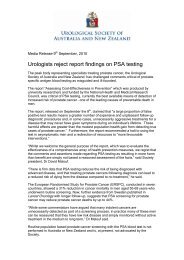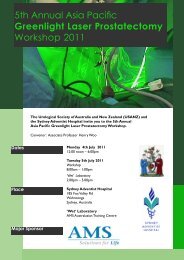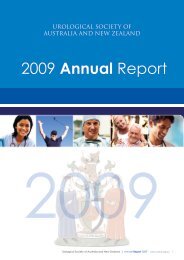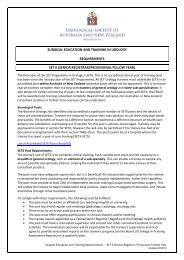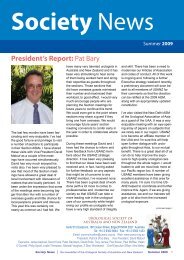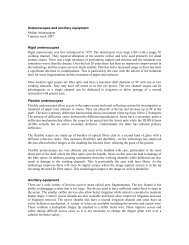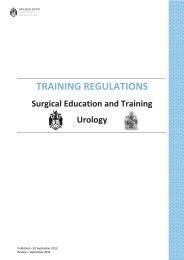CIRCUMCISION OF INFANT MALES
CIRCUMCISION OF INFANT MALES
CIRCUMCISION OF INFANT MALES
Create successful ePaper yourself
Turn your PDF publications into a flip-book with our unique Google optimized e-Paper software.
esults, a comprehensive assessment and systematic review of 37 observational studies<br />
undertaken in 2005 also showed a consistent association between male circumcision and<br />
prevention of HIV.[87, 88] A further systematic review has now been undertaken<br />
confirming these results.[89] (Level 1+) A population survey conducted in South Africa<br />
however failed to show benefit of circumcision in prevention of acquisition of HIV.[90] In<br />
addition there has been recent criticism of early cessation of clinical trials because of clear<br />
therapeutic benefit because of the tendency for this practice to over-emphasise<br />
benefit.[91] Nevertheless United Nations agencies emphasise that male circumcision<br />
should be considered as a part of a comprehensive prevention package in Africa, but that<br />
warn it does not provide complete protection against HIV.[92] (Level 1+) A systematic<br />
review published in 2008 was equivocal about the protective benefits of circumcision in<br />
protecting men who have sex with men from HIV transmission, but recommended further<br />
evaluation.[93] A Ugandan study showed that adult male circumcision did not reduce the<br />
acquisition of HIV by the female sexual partners of HIV infected, circumcised men, and<br />
suggested an increased risk of HIV acquisition in these women.[94] (Level 2)<br />
It is still not clear that the findings from African studies, where the predominant mode of<br />
HIV transmission is heterosexual intercourse, can be extrapolated to Australia and New<br />
Zealand or other western countries, which have much lower rates of HIV infection and<br />
where the predominant mode of transmission is penile-anal sex among men.[93, 95] A<br />
recent Australian report provides some information on this issue. A longitudinal study of<br />
1427 initially HIV-negative homosexual Australian men showed that in the 53 who later<br />
seroconverted circumcision status was not identified as a relevant factor.[75] However<br />
among those with a preference for the insertive role in anal intercourse, being circumcised<br />
was associated with a reduction in risk of HIV seroconversion.<br />
HPV AND CERVICAL CANCER<br />
Human papillomavirus (HPV) causes genital warts in men and women, and has been most<br />
commonly linked with cancer of the cervix, with up to 99% of cases attributed to infection<br />
by oncogenic HPV genotypes. HPV infection prevalence rates vary between 13% and<br />
52% among men. Circumcision has been shown to protect against HPV infection in a<br />
number of studies.[96-98] (Level 2+) A case control study of cervical cancer limited to<br />
women who only ever had one male partner, found that overall there was no association<br />
between circumcision status and cervical cancer. When the analysis was limited to men<br />
who had five or more partners and sex with prostitutes, circumcision did appear to reduce<br />
cancer risk in these women.[96] (Level 2+)<br />
The introduction of HPV vaccination is expected to dramatically reduce the incidence of<br />
HPV infection and cervical cancer. The role of these vaccines in decreasing risks of HPV<br />
infection is now well established.[99, 100] It has been acknowledged that effective<br />
implementation of the HPV vaccines may lead to the virtual eradication of cervical<br />
cancer.[101] There have been calls for the extension of immunisation programs to boys, to<br />
aid in containing their risks as well.[102, 103]<br />
12



